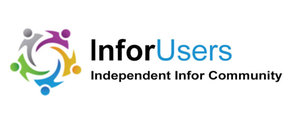The Problem: Easily Accessing Useful Oncology Treatment Information
Oncology treatment information may reside in many disparate cancer registries. Cancer registries collect information on patient demographics, types of cancer, screen mechanisms used, medication regime approaches, and treatment outcomes. Once a year, most state central cancer registries send information to CDC’s National Program of Cancer Registries (NPCR). Therefore, cancer registry data may be at least a year old and somewhat outdated relative to the rapid insights we are seeing with new genetic screening and advancing biological treatments like CAR T-cell therapy.
Searching for recent oncology research is also a disjointed process. Physicians that have become proficient with using web browsers can navigate the universe of search engines to identify research that can acquire insights into patient cases that present new or much different symptoms, attributes, or diagnostic and genomic findings. But this is not an efficient process.
In most of these environments, physicians must navigate the different data and information repositories, and that takes time away from other activities that are likely to be more productive and satisfying for the physicians.
Some genomics oncology solutions exist that imply they are an end-to-end resource for all things related to genetic testing insights for identifying and treating specific cancers. A critical factor in determining the effectiveness of these solutions is how often these resources are updated since new oncology information is generally appearing daily. Missing a piece of relevant oncology data could have a significant impact on the outcomes of a patient’s treatment.
The Solution: A Learning Healthcare System at Massive Scale with Voice Navigation
Advances in voice recognition technologies are resulting in high-level voice communication interactions with humans. Google, Amazon, and Microsoft continue to drive higher capabilities of voice recognition and navigation processes. Voice recognition coupled with AI is creating sophisticated chatbot solutions for digital patient interactions. The ability to add these technologies to a learning healthcare environment based on continuous streams of new data may provide a new generation of clinical decision support capabilities for physicians.
One emerging solution is Tempus One. Tempus, a start-up company, states they have “created a learning healthcare system at massive scale that gains intelligence and insights with each stream of data and interaction [and] enables clinicians to interact with vast Tempus information resources as they would interact with other members of their care team.”
Tempus One allows physicians to converse with a cube that is enabled with voice recognition and AI algorithms to help guide physician queries related to oncology questions for their patients. Think of this as an Amazon Echo device that was designed specifically for oncology but is highly tuned to provide timely, accurate responses to the physicians’ oncology questions.
If the beta testing of Tempus One goes well, the company expects to extend this environment to support infectious diseases, cardiology, and depression.
I believe this approach for providing real-time data to physicians when needed will be highly successful if it is interoperable with the EHR for sharing data.
The Justification: Healthcare Technologies That Improve Workflows and Learning Drive Efficiency Improvements
Emerging digital healthcare companies are focused on creating solutions that logically interact with existing or modified application workflows that improve clinician efficiency for delivering high quality care. Voice recognition and AI components that can easily interact with the enterprise applications will drive higher levels of patient care efficiency and clinician satisfaction. The ability to connect specific learning algorithms related to clinical decision support and treatment protocols into this environment creates an ideal healthcare IT navigation solution that should be the ideal model organizations strive to create.
We all need to work on healthcare applications designs that extinguish keyboards and create user interactions that guide safe, high-quality outcomes.
The Players: A Market Segment of One Currently
Tempus represents an emerging vendor that is building a next-generation oncology support design that allows physicians to focus on their cognitive processes versus having to navigate disparate environments to review the oncology information that is needed to ensure their patients are receiving the best possible care. Tempus One is still in beta testing with several oncologists and is therefore a high-risk solution for most healthcare organizations.
Success Factors
- Health organizations that can tolerate high risk should evaluate Tempus One as an oncology service prototype with oversight by their innovation team.
- The ability to tightly couple Tempus One with the enterprise EHR workflow must be established before acquiring or implementing this solution.
- The AI training model used to evaluate data for treatment recommendations should be evaluated by the oncology physicians to ensure they are comfortable with the sources and the time frames for updating the model.
Summary
The combination of voice recognition and AI technologies to form an interactive, conversive environment for physician interactions will evolve to be the standard application user interface of choice within the next three to five years. While Tempus One provides insights into how these environments can be tightly tuned and designed to support specialty areas such as oncology, it is obvious that this model is an application for all care modalities and specialties.
Google, Amazon, and Microsoft represent large global technology companies that will continue to drive advancements in voice recognition and AI capabilities, and they will combine the two to advance efficient clinician and patient interactions in the digital universe.
We are in a new technology era where technology capabilities will be able to easily adapt to the business process nuances of any industry. Slight moderations to technologies used for retail services will enable healthcare to take advantage of these applications for patient engagement services. If you haven’t noticed, this is already happening.
Photo credit: Sven, Adobe Stock


